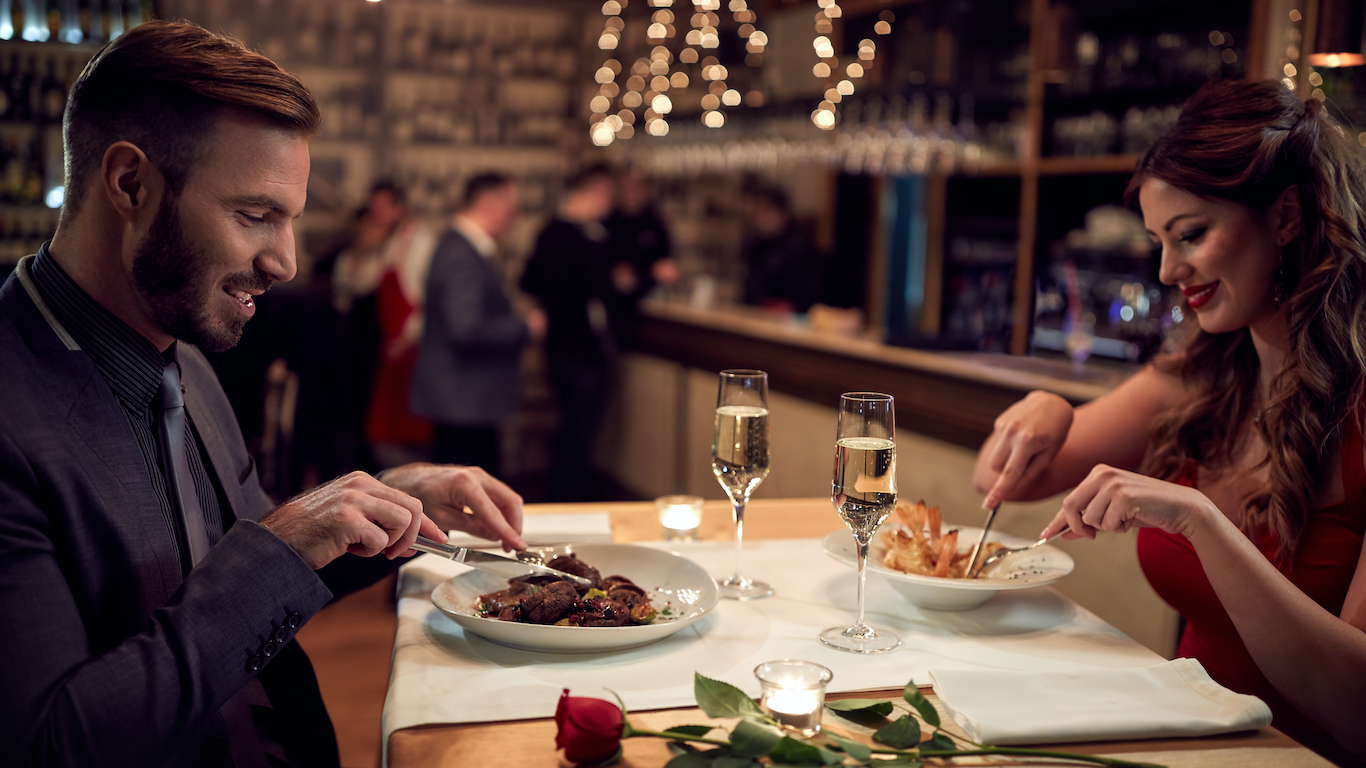Though American cuisine was once derided for consisting mostly of fast food and TV dinners, it is today recognized as having some of the most complex and creative cooking in the world. More than that, though, because of the country’s great cultural diversity, we have restaurants representing virtually every imaginable food tradition in the world — either in reasonably authentic form or as adapted by creative chefs to contemporary tastes and available ingredients.
Being a great food city isn’t just a matter of having good restaurants, of course. Food trucks, food stands, food halls, and other casual venues that can’t quite call themselves restaurants are vital to the scene too. These expand the available possibilities and to give beginning chefs a way to hone their skills and build a clientele with minimum investment.
Beyond that, though, the best food cities have strong support systems — a dining public that appreciates good food in whatever form and is willing to pay for it.
Good food cities are also full of people who like to cook, and thus who patronize farmers markets, specialty food shops, and high-level grocery stores. Peripheral businesses such as coffee shops, cheese shops, bakeries, wine and spirits stores, ice cream parlors, and patisseries add richness to the mix in more ways that one. Craft breweries and distilleries and proximity to farms, fishing ports, and/or wineries are added advantages.
The best food cities in America span the country, from Maine to California, Florida to Washington. They cover 14 states plus the District of Columbia. Three of them, perhaps not surprisingly, are in California, the nation’s market garden and primary producer of fine wine and the birthplace or nursery for many of our food trends. Four of them, on the other hand, are in Texas — which might come as a surprise to some. Though it’s not the only thing that counts, these 20 cities are homes to some of the best restaurants in America.
They’re not the only good cities in which to eat well around the country, of course. These, for instance, are the 30 U.S. cities with the most underrated food scenes. But this selection represents the best of the best, and any one of them is worth a visit, preferably an extended one if you love to eat.
To assemble and rank this list of the best food cities in America, 24/7 Tempo consulted numerous roundups from a wide range of online publications, including U.S. News & World Report, Eater, Far & Wide, Jetsetter, WalletHub, the Washington Post, Zagat, Thrillist, Food & Wine, Southern Living, the Travel Channel, The Daily Meal, and Eat This Not That, as well as numerous city-specific sites. Based on a consensus from these sources, the final choice of cities was judged editorially, as was their position on the list.

20. Baltimore, Maryland
“Baltimore has always teetered on the edge of being an unbelievable food city,” chef Andrew Fontaine of the city’s Alexander Brown Restaurant told Baltimore Magazine earlier this year. “It just needs a little push and a tug and some exposure.” It probably doesn’t hurt that Yelp ranked it ninth among the country’s “Top Foodie Cities” for 2019. Seafood — and especially local oysters and the famous Maryland blue crab, either steamed or formed into crab cakes — is key here, as is almost anything sprinkled with Old Bay Seasoning. Check out Jimmy’s Famous Seafood, Bo Brooks, Canton Dockside, or trendy Dylan’s Oyster Cellar.
Then move beyond the sea includes assorted Latin American specialties such as Alma Cocina Latina, Afghan dishes at The Helmand, and New York star chef Andrew Carmellini’s Rye Street Tavern. You can also choose from any of James Beard Award winner Spike Gjerde’s places, including Woodberry Kitchen and Parts & Labor.
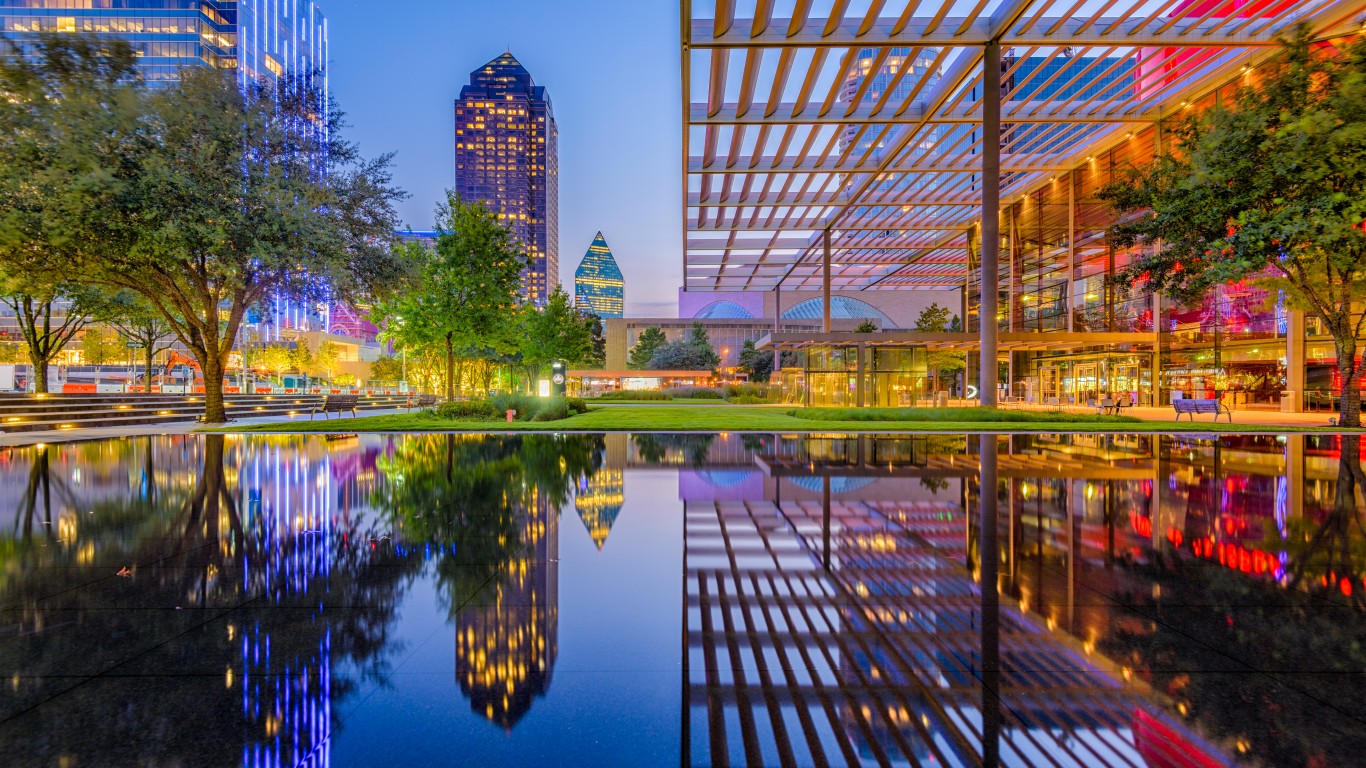
19. Dallas, Texas
Texas is a great state for serious food of all kinds — there are four Texan entries on this list — but Dallas hasn’t attracted all that much attention for its dining culture until the last couple of years. Then Zagat gave it a place right in the middle of its 2017 list of the 30 most exciting food cities in America (at No. 16) — and last year, GQ’s Brett Martin named it the Next Best New Food City, noting that he “didn’t eat a bad meal in two visits there this year.”
Martin liked the Mediterranean fare at Sachet and the tacos at Revolver Taco Lounge (Gabriela & Sofia’s Tex-Mex, Avila’s, and Rafa’s Cafe Mexicano are among local favorites of the genre). Contemporary Southwestern pioneer Dean Fearing is still going strong with his Fearing’s Restaurant; Cattleack Barbeque and Pecan Lodge uphold Texas-style barbecue tradition; Namo Sushi brings first-class sushi to town; Billy Can Can serves innovative modern Texas fare in a Wild West atmosphere. There are also well over 100,000 Vietnamese in the city, and restaurants like Pho DK, Là Me, and Bistro B represent their cuisine splendidly — while Quoc Bao Bakery in nearby Garland serves an exceptional bargain-priced bánh mí.

18. Atlanta, Georgia
Atlanta is sometimes considered a “Northern” city in the South. Maybe so, but it is definitely a capital of great Southern cooking, with longtime staples like Mary Mac’s Tea Room, the Busy Bee Cafe, and The Colonnade, as well as more contemporary establishments like Miller Union, Wisteria, and local celebrity chef-restaurateur Ford Fry’s JCT. Kitchen & Bar. The array of non-Southern places is impressive too, though. Long considered one of the city’s finest restaurants, Bacchanalia and its associated gourmet market and food counter, Star Provisions, have been thriving in a handsome new home since 2017. Elsewhere, the city offers top-notch sushi (Sushi Hayakawa, Tomo Japanese Restaurant), Mexican (La Oaxaqueña, El Rey del Taco), inventive American (Gunshow, Staplehouse), Italian (BoccaLupo, La Grotta Ristorante), barbecue (Fox Bros., Heirloom Market), and much more.
Add to the mix more informal options at LT’s Wings and The Varsity — and don’t forget the150-acre Atlanta Farmers Market next to Hartsfield-Jackson Atlanta International Airport, one of the largest facilities of its kind in the world.
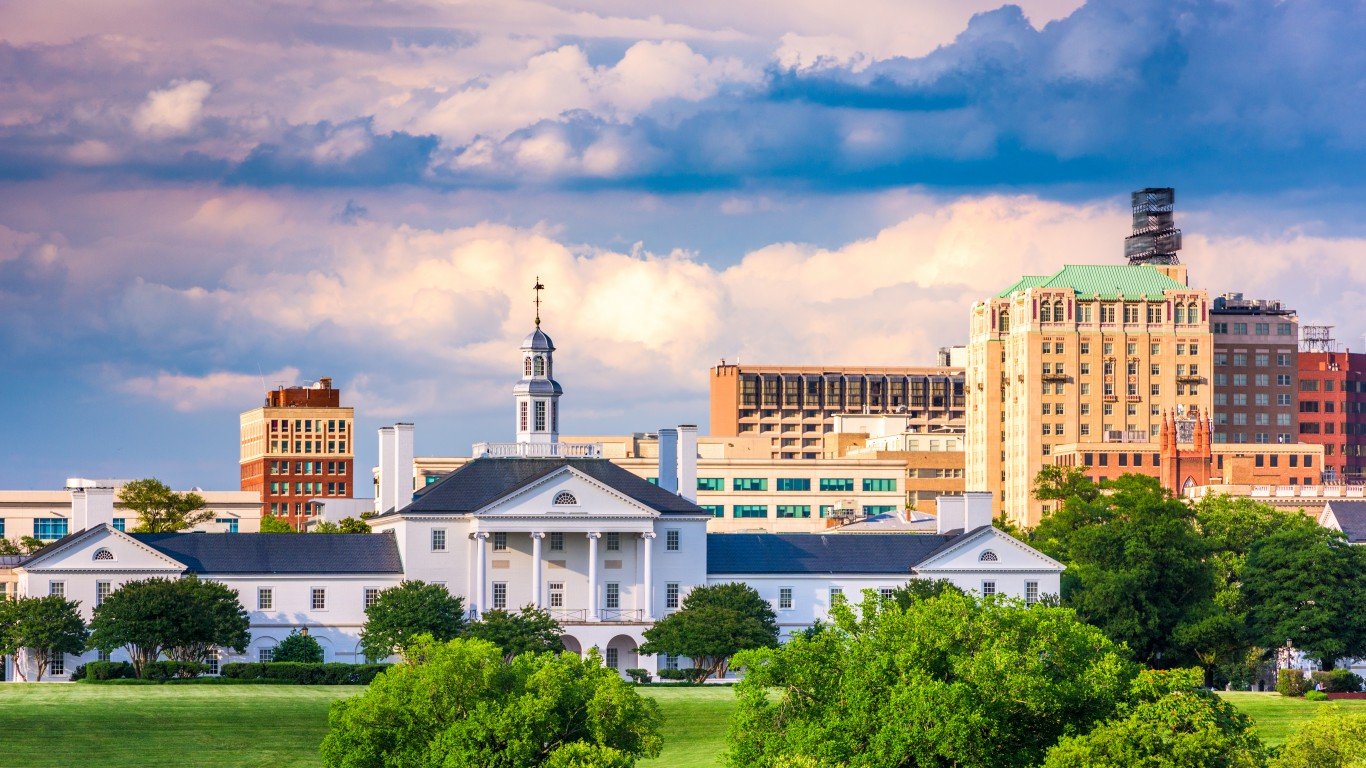
17. Richmond, Virginia
Richmond, Virginia’s state capital, has been hailed as “America’s next great restaurant-obsessed town,” and Eater praised its “bustling food scene, which has grown by leaps and bounds over the years.” Still under the radar for many food-lovers, it offers a wide range of restaurants, from the love-it-or-hate-it Mamma Zu, where very good old-school Italian food is served with a side of rudeness to the Virginia-focused farm- and sea-to-table restaurant Shagbark to two branches of the acclaimed Sichuan restaurant chain Peter Chang’s.
Local favorites like the seasonally focused bistro The Roosevelt, the lively bar-and-grill-like Saison, and Sub Rosa, which Bon Appétit called “one of the best bakeries in America,” help cement the town’s food reputation. Then there’s the modern Jewish deli Perly’s, The Fancy Biscuit, the sophisticated Maple & Pine, the oyster-centric Rappahannock Restaurant, the German-themed Metzger Bar & Butchery, the popular Greek place Stella’s, and the seafood specialist Alewife, among many other choices.
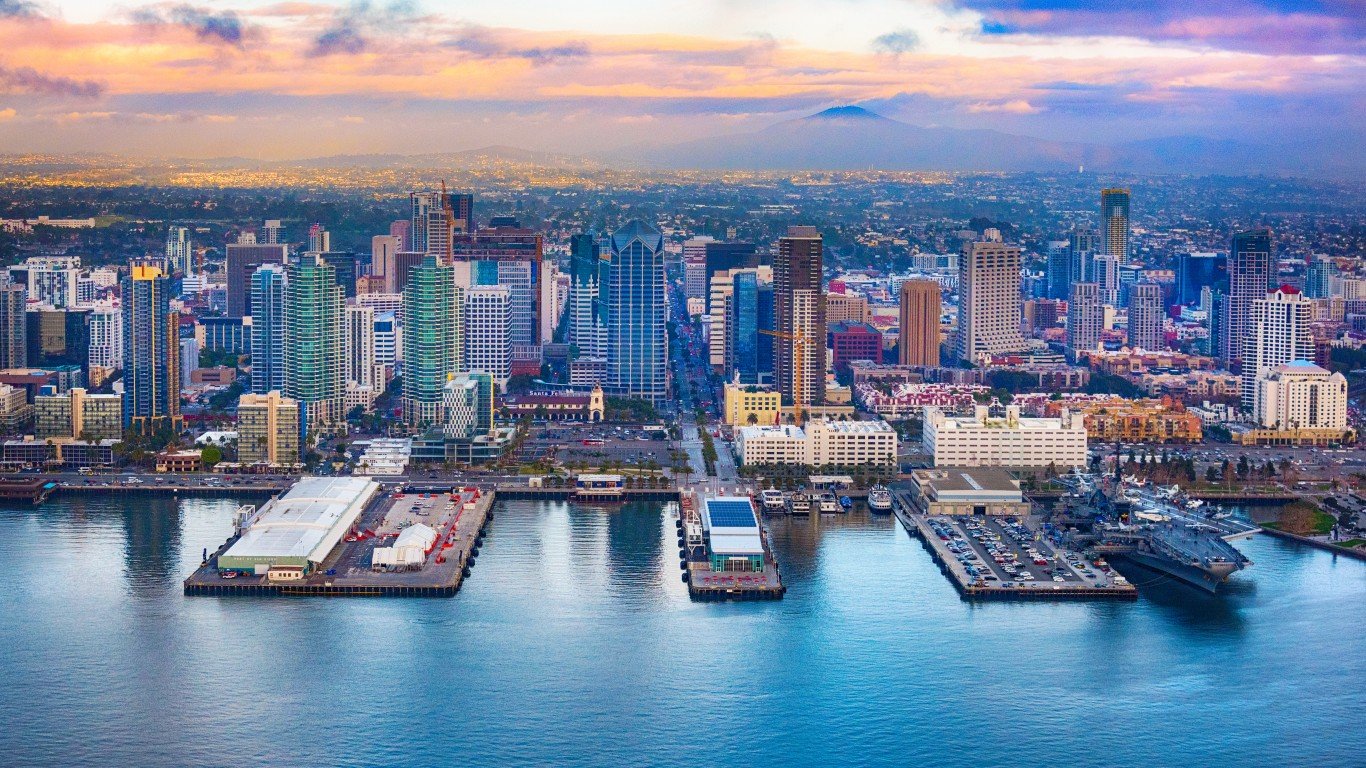
16. San Diego, California
Fish tacos, invented just across the border in Baja California, are San Diego’s heraldic contributions to American gastronomy, and while they may now be found all over the country, they’re virtually impossible to avoid in their adopted home. But why should you avoid them? Among the specialists favored by locals are Wonderland Ocean Beach, Pacific Beach Fish Shop, Mariscos el Pulpo, Puesto, Casa Guadalajara, The Taco Stand, and any of the three area locations of Rubio’s, which is credited with introducing fish tacos north of the border in the first place and is now a nationwide chain.
That’s just the start of the city’s culinary attractions, though. A different take on border food is the San Diego burrito, which substitutes French fries for rice and beans (Trujillo’s and Lucha Libre are favored venues). Italian specialties at Il Dandy and Biga and Japanese offerings at Sushi Ota and Menya Ultra are first rate. Born and Raised and Cowboy Star Restaurant & Butcher Shop are the spots for steak, while The Fishery and Ironside Fish & Oyster serve impeccable seafood. The elegant Addison at the Fairmont Grand Del Mar, just up the road, was recently granted San Diego County’s only Michelin star for its innovative tasting menus. To make the local food scene even better, there are almost 40 farmers markets in the greater San Diego area; the Temecula wine country is only an hour’s drive north; and the increasingly exciting Mexican food town of Tijuana is just across the border.
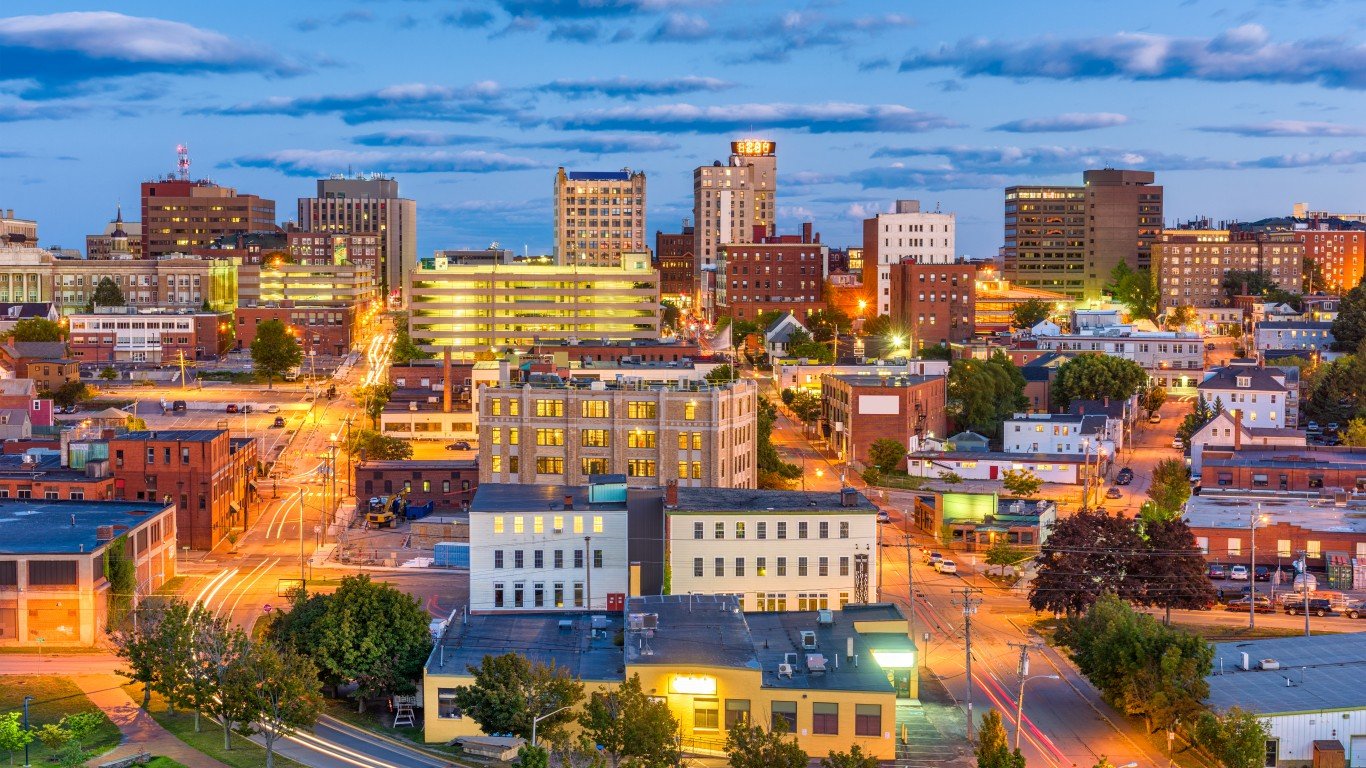
15. Portland, Maine
America is blessed with two superb food cities called Portland — this one and its Oregon namesake (see No. 6). The town’s first culinary celebrity, chef-restaurateur Sam Hayward, has been serving farm-, forest-, and sea-to-table cuisine for at least 30 years at his Fore Street Restaurant, and his other enterprises, including Scales Restaurant and Street & Company, are key members of the local dining community. Another longtime Portland locavore establishment is Local 188, while Miyake uses as much Maine-caught seafood as possible for its excellent sushi.
Central Provisions offers an impressively varied daily-changing menu, Eventide Oyster Co. serves impeccable shellfish (and redefines the lobster roll), and duck appears in various forms at Duckfat. Natural wine is the focus at Drifters Wife wine bar and the same proprietors’ Maine & Loire wine shop next door, while Browne Trading Company is a top retail (and mail-order) source for caviar and fresh seafood both domestic and imported.
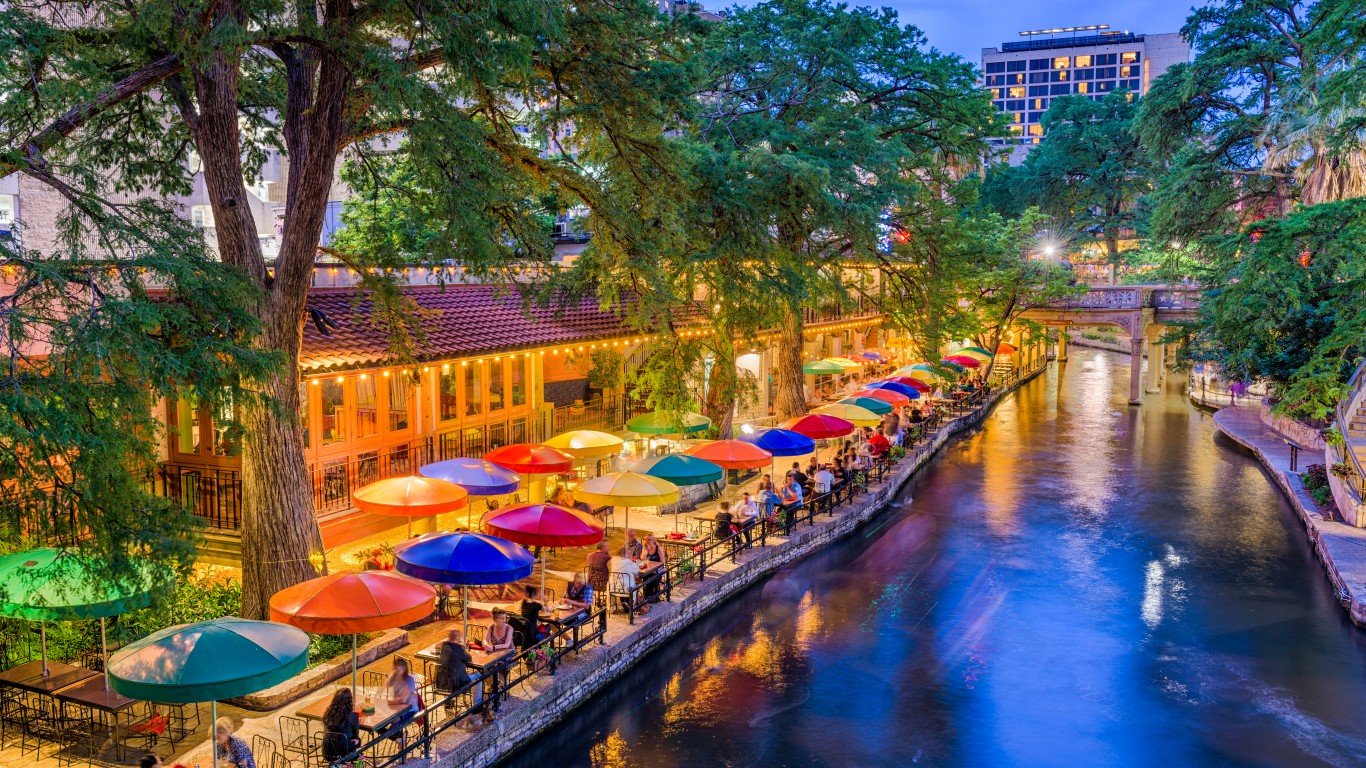
14. San Antonio, Texas
The most famous cuisine in this city on the edge of the south-central Texas Hill Country — the most affordable food city in America, according to WalletHub — is Tex-Mex. Anyone who doesn’t appreciate how good this hybrid food style can be should visit such local restaurants as Los Barrios, Mi Tierra, La Margarita, Ray’s Drive Inn, or Henry’s Puffy Tacos.
There’s a lot more to the local food scene than that, though. Biga on the Banks has long been the city’s go-to spot for upscale modern American food. Liberty Bar is a serious restaurant masquerading as a friendly, music-filled hangout. Mixtli takes the Tex out of Tex-Mex, with a seasonal menu of interior Mexican specialties, while 2M Smokehouse gives barbecue a Tex-Mex accent, and Bistro09 does French right. Cured produces some of the best house-made cured meats in the country. Shuck Shack is a first-rate seafood place, Battalion serves hearty Italian, and Range is a steakhouse with imaginative salads and pastas added to the mix.
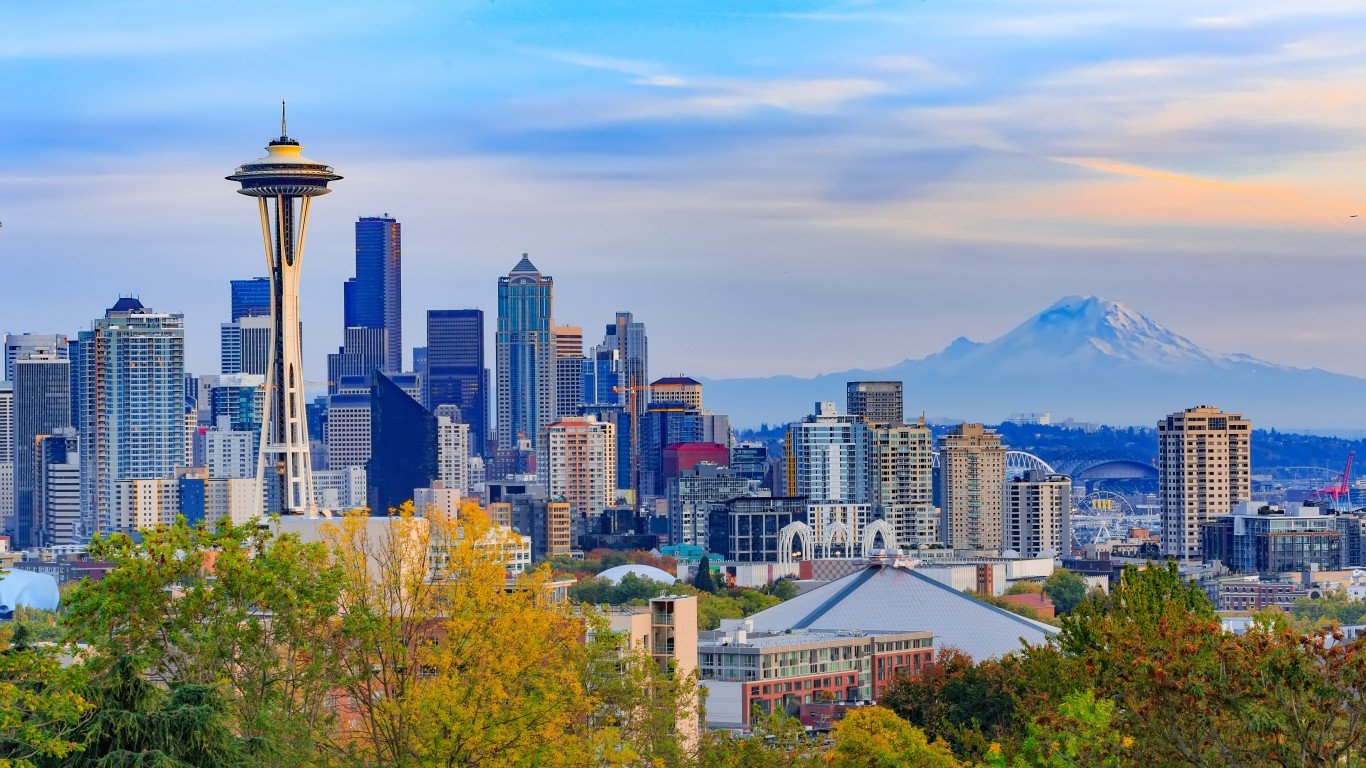
13. Seattle, Washington
A kind of gigantic food hall that opened in Seattle in 1907, generations before anybody knew what a food hall was. Seattle’s Pike Place Market — with its shops, restaurants, produce stands, and exuberant fishmongers — is an essential stop for any food-lover. (And not just food-lovers, apparently: Five years ago, Travel & Leisure identified it as the 33rd-largest tourist attraction in the world, welcoming about 10 million visitors annually.) Equally historic, the first-ever Starbucks is just across the street.
The Seattle fine dining scene is thriving, typified by places like modern Pacific Northwestern pioneer Canlis, the contemporary Valencian Tarsan i Jane, and the avant-garde Eden Hill. High-level Japanese restaurants are all over the place — Kamonegi, Adana, Sushi Kashiba, Wataru, and more. James Beard Award winner Renee Erickson delights diners with The Walrus and the Carpenter, Bateau, and The Whale Wins. JuneBaby, opened by another Beard honoree, chef Edouardo Jordan, was deemed one of America’s 38 essential restaurants last year by Eater for its evocative Southern food. (Erickson’s Bateau also made that list.)
The Pacific Northwest is famous for seafood, of course, and establishments like RockCreek, Blueacre Seafood, and the Vietnamese-Northwestern Salted Sea do an admirable job with it, and Flintcreek Cattle Co. cooks responsibly raised game.
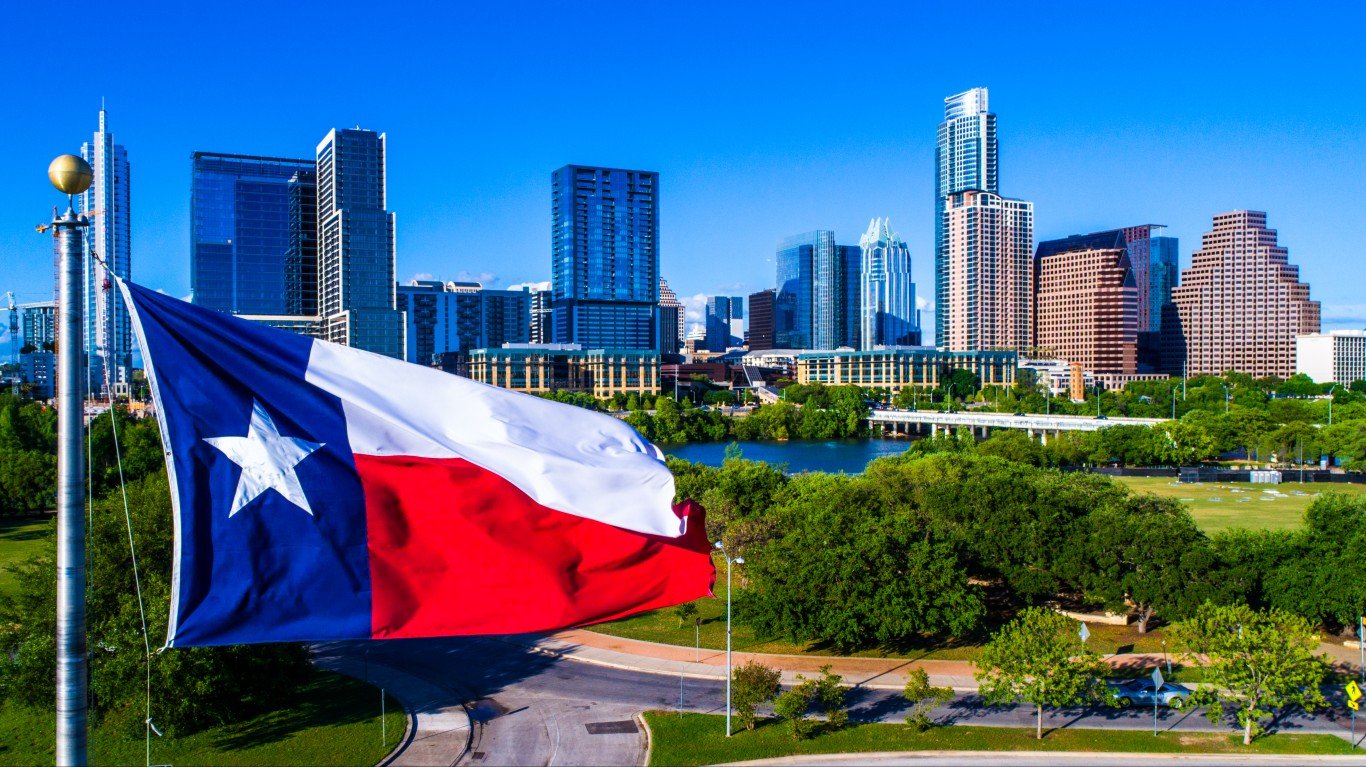
12. Austin, Texas
Let’s start where some of Austin’s best newer restaurants started: with food trucks. There are said to be an astonishing 1,000-plus of them in the Texas capital, roughly one for every 950 people (though Austin is the third fastest growing city in America, so the trucks will have to keep multiplying if they’re going to keep up). The innovative Odd Duck started life as a food truck, for instance. So did the Middle Eastern Halal Bros., the Detroit-style pizza place Via313, seafood specialist Garbo’s, and the celebrated Franklin Barbecue — whose owner, Aaron Franklin, was named Best Chef: Southwest at the 2015 James Beard Awards.
Other Austin musts: farm-focused New American restaurants like Wink, Lenoir, and Barley Swine; Chez Nous and Justine’s Brasserie for French; Matt’s El Rancho and Güero’s Taco Bar for Tex-Mex; Fonda San Miguel and El Alma for Mexican; Uchi for exquisite non-traditional sushi and Kemuri Tatsu-ya for Texas-style Japanese bar food; Elizabeth Street Cafe for Vietnamese-French and Loro for pan-Asian smokehouse fare (a collaboration between the proprietors of Uchi and Franklin Barbecue; L’Oca d’Oro and Vespaio for Italian; Hopdoddy Burger Bar and Hill-Bert’s Burgers for burgers. There isn’t much you can’t find here.
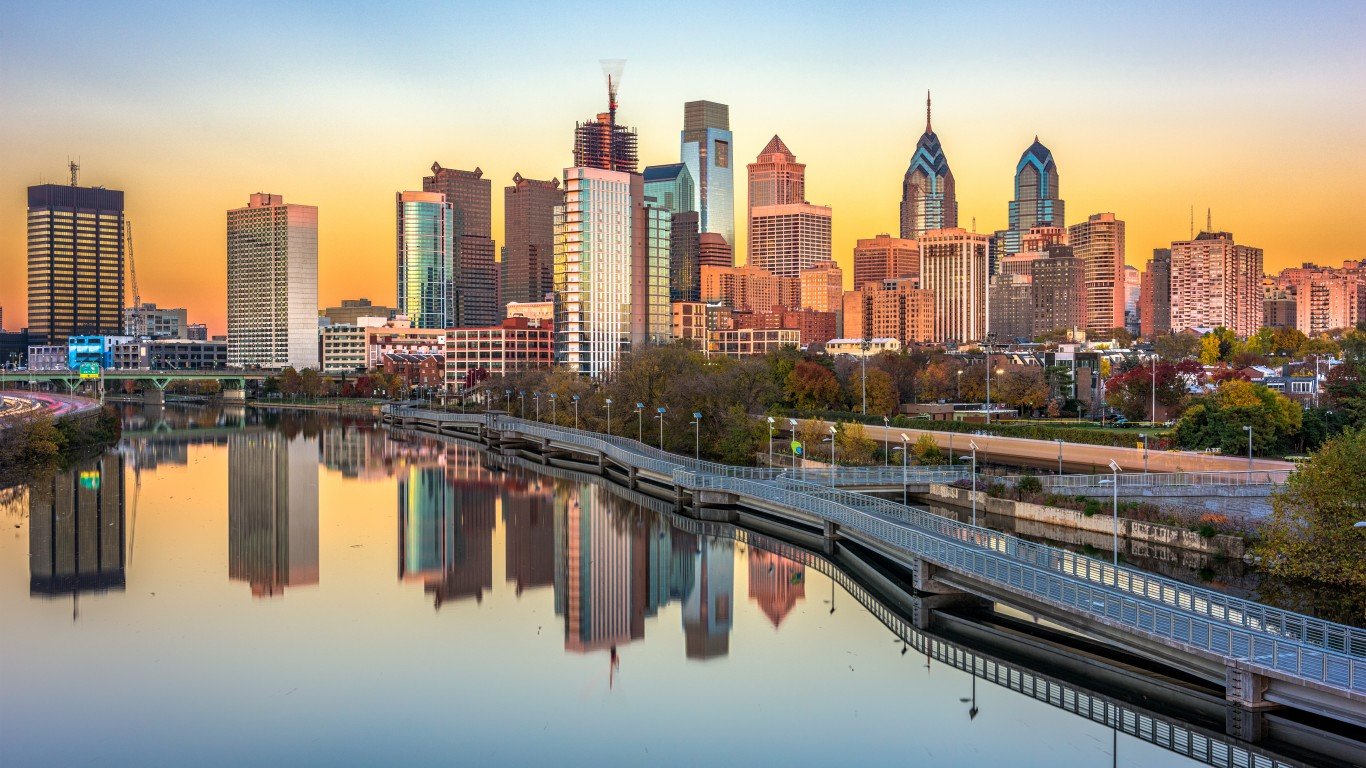
11. Philadelphia, Pennsylvania
The City of Brotherly Love has two signature foods, the cheesesteak and the roast pork sandwich. The question of where to get the best example of each has been known to stir unbrotherly strife. Top contenders for the cheesesteak title include Pat’s King of Steaks (which claims to have invented the sandwich), its longtime rival Geno’s across the street (which claims to have first added cheese), Dalessandro’s, Chubby’s, and such small local chains as Steve’s Prince of Steaks, Joe’s Steaks + Soda Shop, and Larry’s Steaks. Roast pork sandwiches? Try John’s Roast Pork (which also makes a mean cheesesteak), DiNic’s, Marinucci’s, or Nick’s Old Original Roast Beef.
Once those essentials are out of the way, food-lovers should definitely visit the historic Reading Terminal Market, one of the oldest and largest such institutions in America. Under its roof are, among other things, seven bakeries, four produce stands, six meat and poultry purveyors, seven specialty food shops, and 26 food stalls or restaurants — including the aforementioned DiNic’s, Pearl’s Oyster Bar, Sang Kee Peking Duck, Beck’s Cajun Cafe, Hunger Burger, and Umi Seafood and Sushi Bar.
Philadelphia is also home base for three nationally known chef-restaurateurs: Michael Solomonov, whose empire includes the Israeli restaurant Zahav and the offbeat Federal Donuts chain (which serves both fried chicken and doughnuts); Marc Vetri, who has the highly praised Vetri Cucina in the city, with a branch in Las Vegas; and José Garces, who has eight Mexican, Latin American, and American restaurants in Philadelphia and six other places elsewhere. Add in Oyster House for seafood, Square 1682 for contemporary American, and Suraya for Lebanese, among many others — and remember that the superlative La Colombe Coffee Roasters was founded here — and you’ll see why this historic city has become a major food destination.

10. Washington, D.C.
Ten years ago or so, the nation’s capital probably wouldn’t have made this list, but things have changed a lot since then. Bon Appetit dubbed it the 2016 Restaurant City of the Year. Last year, Food & Wine singled out Kevin Tien of the Japanese/Vietnamese/Southern Himitsu as one of its best new chefs of 2018, pegged the Middle Eastern/Central Asian Maydan as among its restaurants of the year, and for good measure named the Ethiopian hot chicken sandwich as one of the year’s best bites. In addition, this year, the prestigious Guide Michelin granted a star to some 15 local establishments (including Maydan) and gave two to another two restaurants, plus three stars to the suburban Inn at Little Washington.
D.C. would be a major restaurant city, though, on the basis of José Andrés alone. The prolific, indefatigable chef and humanitarian is based here, and the city is home to his two-star Minibar and to Jaleo, Oyamel, Zaytinya, China Chilcano, and America Eats Tavern, among other enterprises. The capital’s other two-star is the extravagant Pineapple and Pearls, known for its imaginative tasting menus. Other places not to miss include the New American Rose’s Luxury, the southern Italian-themed Masseria by Nicholas Stefanelli, the Laotian Thip Khao, the Filipino Bad Saint, the barbecue-centered Federal Pig, the Ethiopian Zenebech, the Indian Rasika, and the unconventionally Mexican Poca Madre (which offers a taco omakase menu) — as well as the “Jew-ish” Call Your Mother Deli and the 1958-vintage landmark Ben’s Chili Bowl.

9. Miami, Florida
Cuban food sets the pace here, whether at Cafe la Trova, which seeks to reproduce the atmosphere of 1950s Santiago de Cuba or the classic Versailles or an outpost of the La Carreta chain. Mexico is well represented, too, though, by places like Bakan, Lolo’s Surf Cantina, and the Tijuana-style seafood restaurant Pez. KYU is a modern Asian place, NIU Kitchen is Catalan in style, La Mar is Peruvian, Michael’s Genuine Food & Drink is a James Beard Award-winner — Michael Schwartz’s — all-American flagship, La Petite Maison is a trendy import from the Côte d’Azur, Los Fuegos is Argentinean grill master Francis Mallman’s elegant South American place, and Joe’s Stone Crabs — probably Miami’s most famous restaurant — is a veritable icon.
The city also boasts at least 10 food halls — like Time Out Market, curated by the publication of the same name, with some 19 local restaurants represented. The city’s food scene shows no signs of slowing down as more restaurants continue to open. Other recommended food experiences range from a visit to the monthly food truck convocations at Tropical Park to a leisurely dinner at the haute-Continental Thomas Keller restaurant The Surf Club in neighboring Surfside.
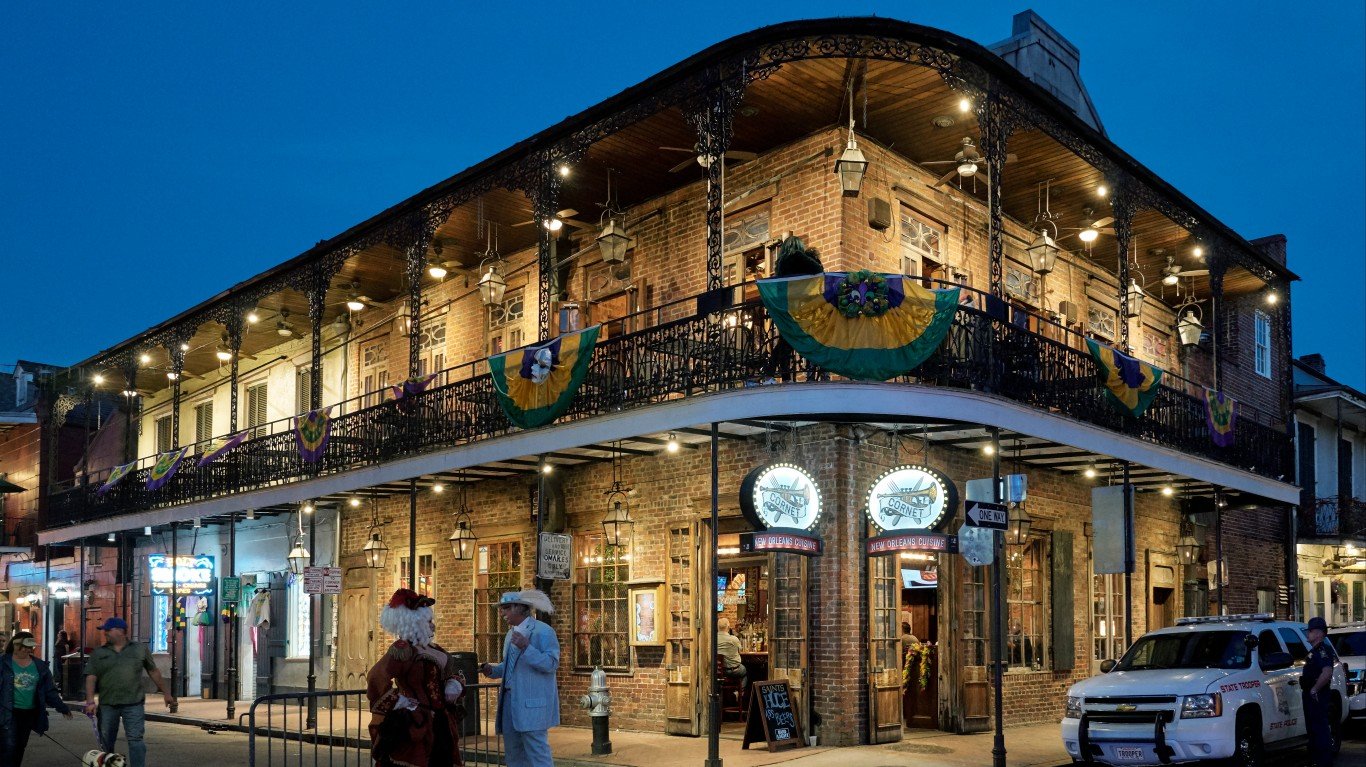
8. New Orleans, Louisiana
The capital of Creole and Cajun cooking and birthplace or adopted home of dishes like jambalaya, gumbo, étouffée, the muffaletta, the po’ boy, and beignets, among other, sometimes gets left off lists of the country’s best restaurant cities. Maybe that’s because the city’s signature dishes are so well-known and often ordered that people think that’s all the Big Easy has to offer diners. Of course, there’s nothing wrong with those foods, and establishments like Central Grocery, Domilise’s Po-Boy & Bar, the revered Dooky Chase Restaurant, Cafe Dauphine, the very upscale Commander’s Palace, the fabled Galatoire’s, and the late Paul Prudhomme’s K-Paul’s Louisiana Kitchen represent local tradition admirably.
But then there are multiple James Beard Award-winning chef Donald Link’s regionally flavored non-traditional places, like Herbsaint, Cochon, and Peche Seafood Grill; Nina Compton’s Compère Lapin and Bywater American Bistro, combining American, Caribbean, and French influences; Vincent’s Italian Cuisine, serving Louisiana-Italian fare; Saffron Nola for Indian dishes; Marjie’s Grill, where the cuisines of Thailand, Vietnam, and Laos inspire original dishes; Alon Shaya’s Middle Eastern and North African Saba; the multitude of choices at the Pythian Market and Auction House Market food halls; and of course what may well be the country’s ultimate fried chicken at Willie Mae’s Scotch House. It’s no wonder that, as if to announce to the country that it was time to take another look at New Orleans as a culinary destination, Southern Living named New Orleans the top food city in the South.
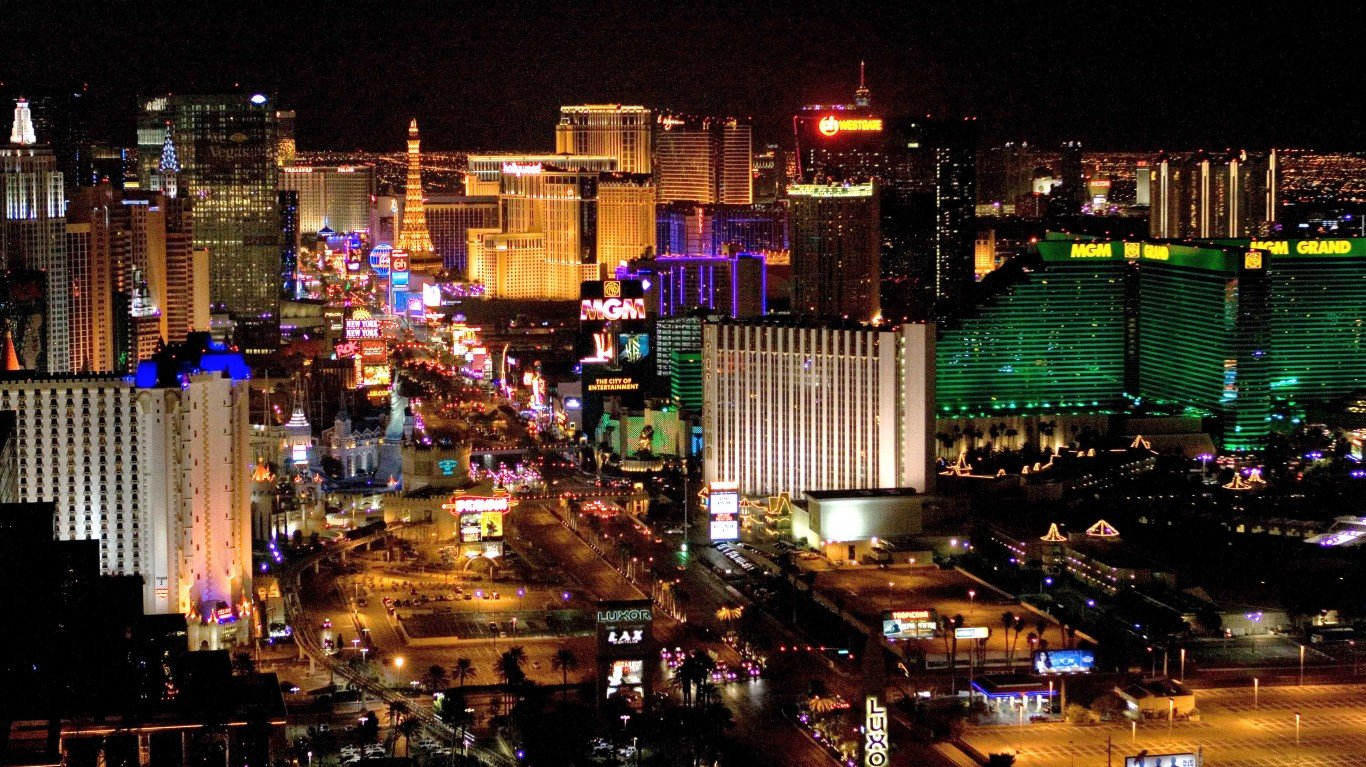
7. Las Vegas, Nevada
Sin City might as well be called that for the sin of gluttony, considering the concentration of extravagant and usually excellent restaurants around town, many of them located in glamorous hotel-casinos on the Strip. Best-known among these are outposts opened by famous chefs whose main establishments are elsewhere.
Ubiquitous Japanese master Nobu Matsuhisa has two namesake restaurants in the city, for instance; Wolfgang Puck has an iteration of his reimagined steakhouse CUT, among other places; José Andrés has a number of restaurants, including Bazaar Meat and the tasting-menu experience é by José Andrés. Multi-starred French chefs Guy Savoy, Pierre Gagnaire, and the late Joél Robuchon all opened in Vegas and all their places are thriving. TV celebrity chefs Tom Colicchio, Gordon Ramsay, Bobby Flay, Guy Fieri, and Giada de Laurentiis are also in the mix, as are Thomas Keller, Emeril Lagasse, Roy Choi, Morimoto, and Michael Mina.
What locals know and visitors are starting to discover, though, is that there are plenty of less glitzy restaurants of quality off the Strip. District One in Chinatown is a must. Esther’s Kitchen serves authoritative Italian cooking; at Sparrow & Wolf it’s wood-fired comfort food; Flock & Fowl channels Asian hawker fare; it’s pizza at Good Pie and Vietnamese-tinged modern American at The Black Sheep. A food-lover could eat very well here without hitting the big-name places at all.
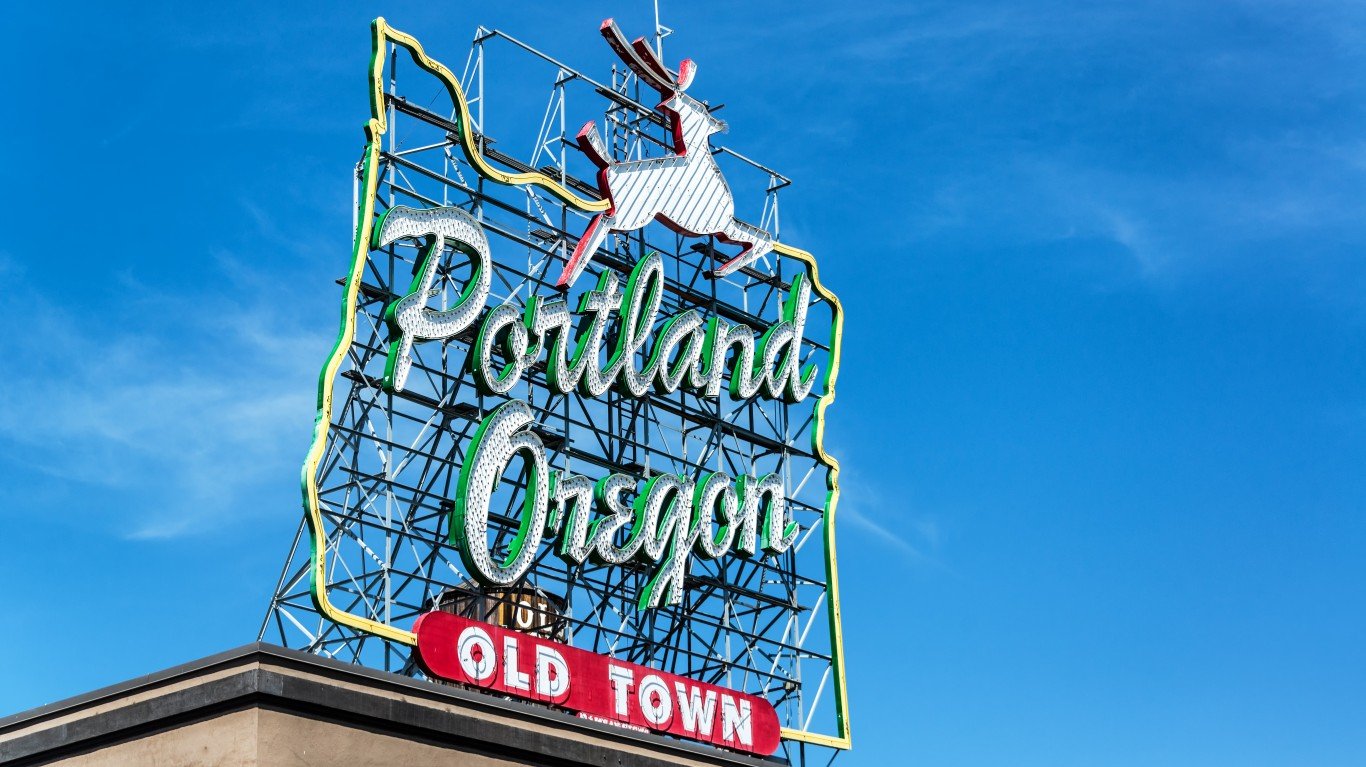
6. Portland, Oregon
WalletHub named the West Coast’s Portland the No. 1 food city in America based on some 30 indicators measuring affordability, diversity, accessibility, and quality. Even without considering its many fine restaurants, the city shines. It has food trucks like any other city, but more common here are food carts, most of which are parked in permanent slots in groups called pods. There are said to be more than 600 of these around town, offering a United Nations of cuisines — Korean, Indian, Thai, Vietnamese, Egyptian, Mexican, Burmese, Peruvian, Puerto Rican, Polish, Hawaiian-Filipino, and many more. Then there are the city’s microbrewing scene, its urban wineries, its artisanal coffee shops, its chocolate and doughnut specialists, and more.
But of course there are restaurants, too. Standouts include the wood-fire specialist Ox, the suave French bistro Le Pigeon, chef Andy Richter’s Pok Pok Thai, the bright New American Coquine, the wine-centered Noble Rot, the nuevo tapas bar Ataula, the Duck House Chinese Restaurant, the eclectic pizzeria Lovely’s Fifty Fifty, the charcuterie and restaurant Olympia Provisions SE, the imported Japanese ramen place Afuri, and the Russian Kachka.
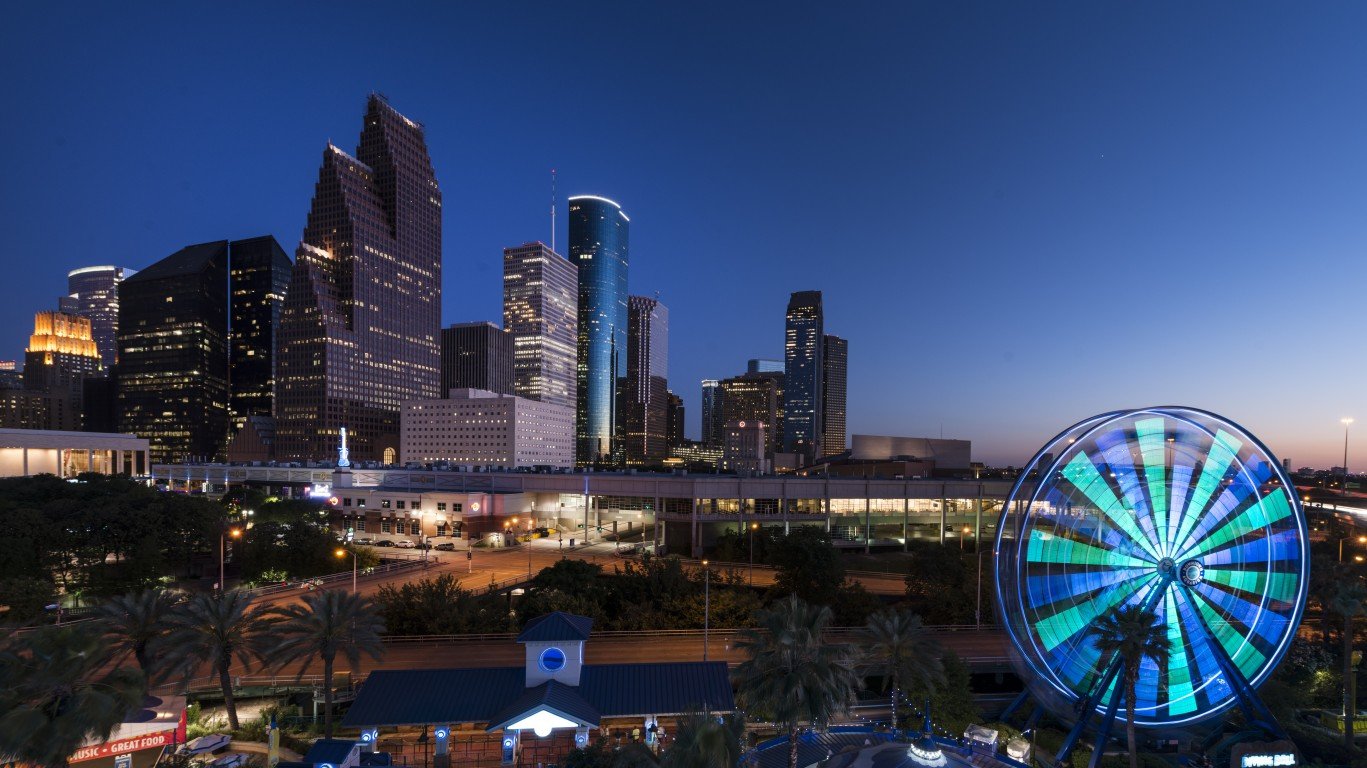
5. Houston, Texas
Houston’s great strength as a food city grows out of its diversity. In fact, in a study published earlier this year, WalletHub ranked it as the most diverse city in America based on economic, socioeconomic, cultural, household, and religious factors. There are said to be more than 10,000 restaurants in town, representing the foods of more than 70 countries, and any serious eater who spent some time in Houston would likely enjoy a truly astonishing variety and quality of meals, both traditional and innovative.
Of course there are excellent barbecue and Mexican/Tex-Mex restaurants galore and barbecue restaurants — like Truth BBQ, Ray’s BBQ Shack, the Pit Room, and Goode Co. in the former case, Caracol, Xochi, Cuchara, and The Original Ninfa’s in the latter. The city also has the second-largest Vietnamese population in the country, after Los Angeles, numbering about 80,000, and its Little Saigon is packed with good restaurants (some specializing in Cajun-Viet crawfish boils).
Elsewhere, there’s the old-style upscaled Italian place called Tony’s, the Southern-influenced Helen Greek Food and Wine, the Cajun-Creole brasserie Eunice, the groundbreaking African-American Indigo, the Neapolitan pizza parlor Pizaro’s, the modern Indian Pondicheri, the standard-setting Pappas Bros. Steakhouse, the Spanish BCN Taste & Tradition, and the contemporary sushi bar Kata Robata.
Some of Houston’s best-known restaurants have undergone reincarnations in recent years, too: Contemporary Southwestern pioneer Robert Del Grande’s Café Annie has been rebranded as The Annie, with a complete redesign and new dishes on the menu. The venerated tasting-menu place Oxheart is now owner-chef Justin Yu’s more casual Theodore Rex. And Chris Shepherd closed his Underbelly, described by the Houston Chronicle as “the restaurant that redefined how Houston ate,” last year and replaced it with a modern steakhouse called Georgia James. Every one of the new places has won acclaim.
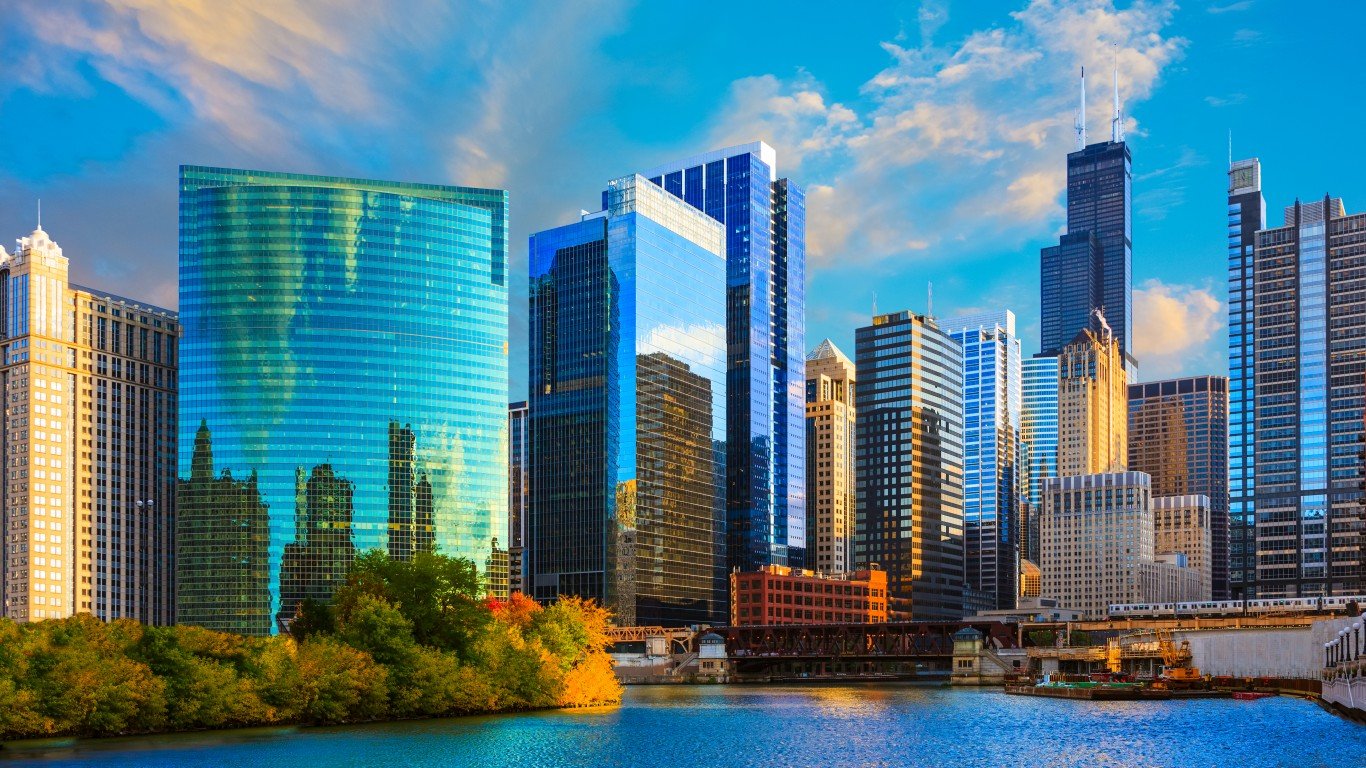
4. Chicago, Illinois
Bon Appétit named Chicago its 2017 Restaurant City of the year. And this year, some 25 Chicago restaurants were awarded Michelin stars, including the famed Alinea, which got the ultimate three-star accolade, and three more with two stars each — Acadia, Oriole, and Smyth. Among the 21 one-stars was Band of Bohemia, which has the distinction of becoming the first Michelin-starred brewpub anywhere. And thought the highly original New American place Bellemore hasn’t made Michelin yet, it was named the country’s best new restaurant last year by Robb Report.
Diners in the city can also experience the gutsy dishes at Chicago essentials like Au Cheval (famous for its burger), Girl & the Goat, and The Publican, or take a world tour with visits to such restaurants as Galit (Middle Eastern), Cabra (Peruvian), Ciccio Mio (Italian), Papa Cenar (Spanish/Mediterranean), Fat Rice (Macanese), Arami (Japanese), and the many representations of the cuisines of Mexico (the city has America’s sixth largest Hispanic population, about 80% of which is Mexican), from street food at the Maxwell Street Market to the sophisticated offerings at Rick Bayless’s Topolobampo (or the food at any of his other restaurants).
Add bars like The Aviary and Three Dots and a Dash; the Motor Row and Lagunitas breweries; and of course Chicago’s famous hot dog joints (Wolfies, The Wiener’s Circle, Byron’s) and pizzerias serving both the city’s signature deep dish pies (Lou Malnati’s, Pequod’s, Connie’s) and other styles (Marie’s Pizza & Liquors, Forno Rosso, Paulie Gee’s), and you’ve got a world-class food city.
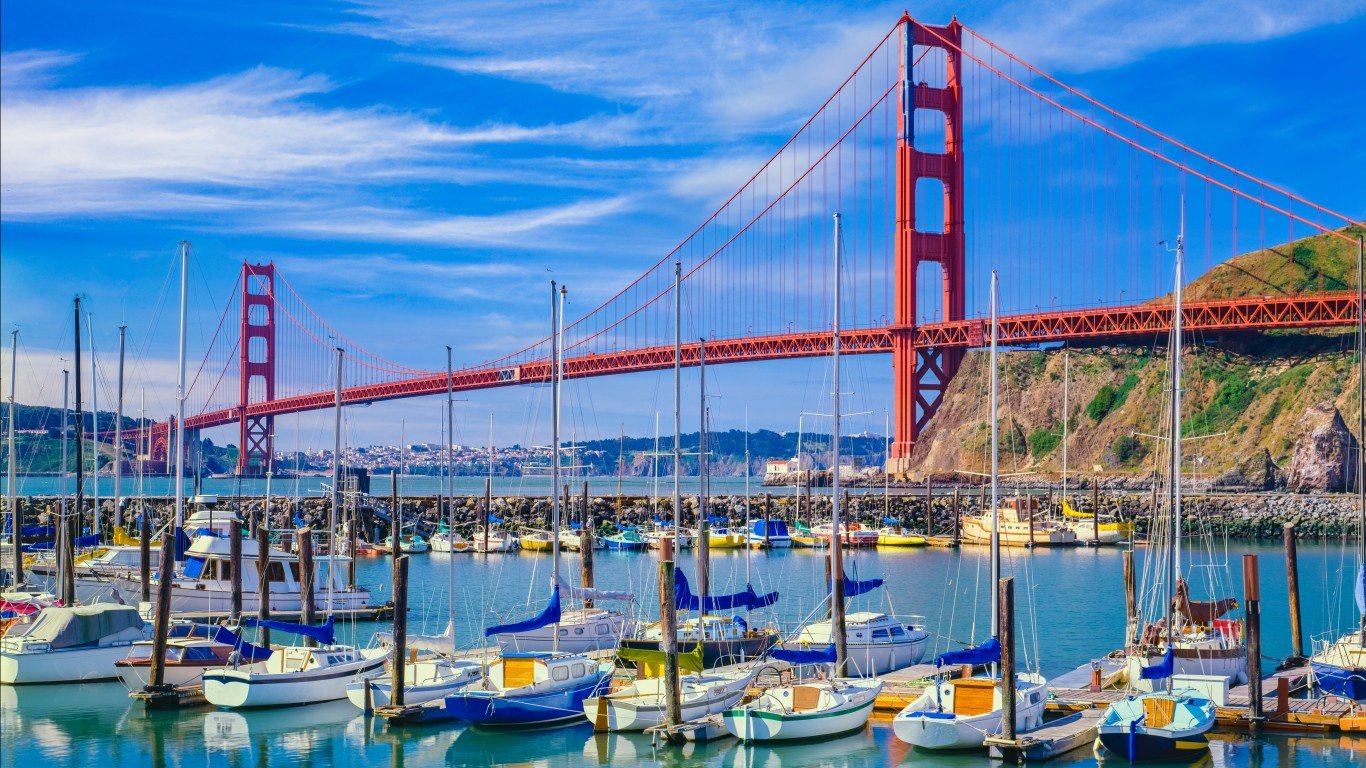
3. San Francisco, California
San Francisco is sometimes said to have more Michelin three-star restaurants than any other city in the country, but that’s not strictly speaking true. It has three thus-designated temples of gastronomy, all of them superb — Atelier Crenn, Benu, and Quince — as compared with five for New York City. The disconnect comes from the fact that there are four other three-stars in what might loosely be termed the Bay Area, all more than 40 miles from the city. Still, three isn’t bad — and there’s so much else to devour here.
A list of recommended restaurants could fill a volume, but for starters: Zuni Cafe for classic California cuisine; Tartine Bakery for pastries, bread, and café fare; Yank Sing for dim sum; Foreign Cinema for eclectic fare and old movies; Flour & Water for pasta and pizza; Swan Oyster Depot for oysters, etc.; Nopa for stylish New American; Angler (Esquire’s best new restaurant in America last year) for seafood; State Bird Provisions for small plates; Liholiho Yacht Club for Hawaiian specialties; the Tonga Room for tiki drinks and snacks — and the extraordinary Ferry Building food hall, especially worthwhile on Tuesdays, Thursdays, and Saturdays, when the forecourt is filled with one of the country’s best farmers markets.
And if all that isn’t enough, there are also the many culinary attractions in communities just across the bay — Oakland (home of historic Swan’s Market and a burgeoning dining scene that includes the butcher shop/restaurant Clove and Hoof, the two-star Commis, and the much-lauded Oliveto) and Berkeley (whose attractions range from the worker-owned cheese shop, bakery, and espresso bar Cheese Board Pizza to the legendary Chez Panisse).
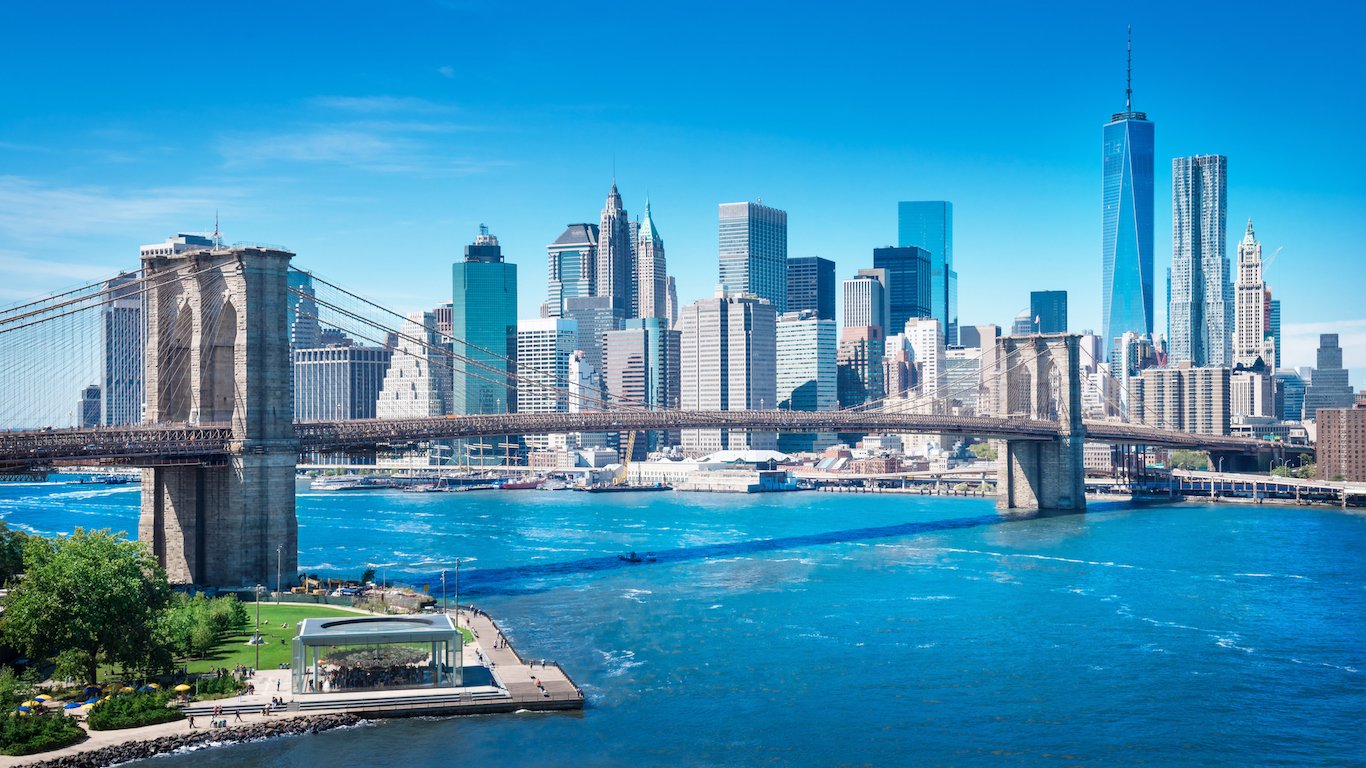
2. New York City
New York City restaurants have a total of 97 Michelin stars, including the country’s only three-star sushi bar (Masa) and four other establishments with that honor. Exquisite French restaurants thrive here as nowhere else in America (Le Bernardin, Daniel, Gabriel Kreuther, Jean-Georges). Cutting-edge Korean places (Hanjan, Atoboy, Atomix) are increasingly popular. Italian choices range from the modest Via Carota to the red-sauce joint Rao’s (where only regulars can get a table) to the elegant Del Posto. Opulent Chinese, authentic Spanish, vibrant West African, irresistible Middle Eastern, not to mention Nordic, Brazilian, Mexican, Australian, steakhouses, a host of memorable burger and fried chicken places, one-of-a-kind establishments like Estela, Momofuku Ssäm Bar, Olmsted, and more.
Food halls seem to be everywhere, too — Smorgasburg, Chelsea Market, Eataly (in two locations) Essex Market, Le District, DeKalb Market Hall, and four Urbanspace venues, among many others to sample a little bit of everything. And while Brooklyn is well-known for its eating places, Queens should be on diners’ itineraries too — for things like the Greek restaurants of Astoria, the Little India area of Jackson Heights, and the fast-growing Chinatown in Flushing. It’s hard to think of a food tradition that’s not represented in the Big Apple.
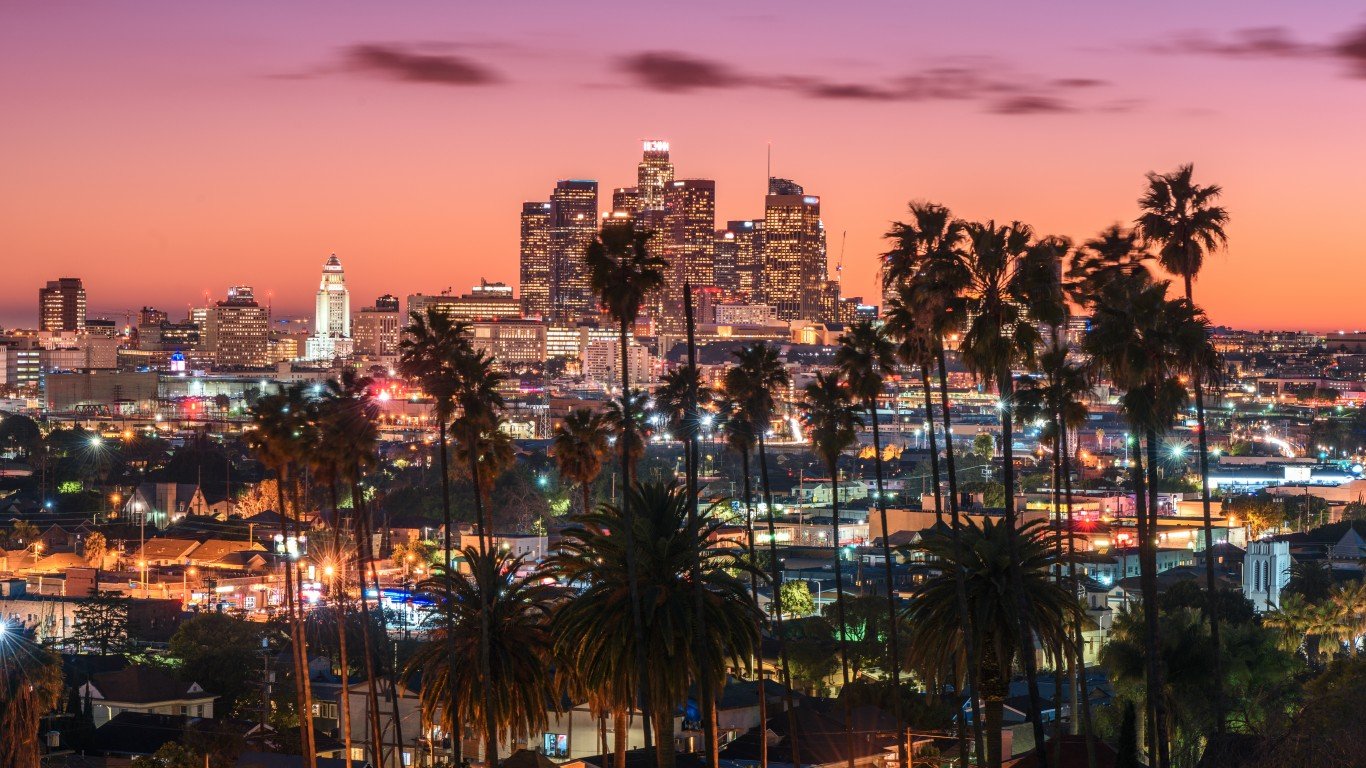
1. Los Angeles
“There’s only one place, and that’s Los Angeles,” Wolfgang Puck — L.A.’s most famous and influential chef — told Eater a couple of years ago. “We have all these different cities within the city, with their own culture. A lot of things really started with us. And […] we have these great products all year round.” Puck’s Spago changed the restaurant scene in America with its open kitchen, its gourmet pizzas, and its revelation that fine dining could be informal and fun. He then went on to virtually invent modern Asian fusion food at Chinois on Main and redefine the steakhouse with the original CUT. And that’s just one chef’s output.
Other notable restaurants in the city include Providence, which may be the best seafood restaurant in America, the equal to New York’s Le Bernardin. Shunji and n/naka are breaking new ground in a city already known for its excellent Japanese cuisine. Bavel puts an imaginative spin on Middle Eastern dishes. PETA recently dubbed the city “vegan heaven” for its array of animal-free choices. There are Mexican restaurants on seemingly every block (the Oaxacan specialist Guelaguetza gets regularly named among the best L.A. restaurants of any kind), and every Central American food tradition is well represented.
Los Angeles also boasts the largest Korean population of any city outside Korea, the largest Thai population outside Thailand, and the second-largest Ethiopian population outside Ethiopia, and next-door Orange County has the largest Vietnamese population outside Vietnam — and L.A. is full of good restaurants representing all their cuisines. The local Filipino food scene is giving the city some of its most exciting dining these days, and there are few Chinese restaurants anywhere in the country on the level of Szechuan Impression or Sea Harbour in the neighboring San Gabriel Valley.
And if any further proof is needed that Los Angeles is the place to be for food these days, consider the lineup of famous chefs from elsewhere who have opened or are opening restaurants in the city — Eddie Huang, Daniel Humm, and Jean-Georges Vongerichten from New York City; Chris Bianco from Phoenix; Charles Phan from San Francisco; Enrique Olvera and Gabriela Cámara from Mexico; Massimo Bottura from Italy; Shaun Quade from Australia; and Rodrigo Oliveira from Brazil, among others. L.A. is the best food city in America and it looks like it’s only going to get better.
